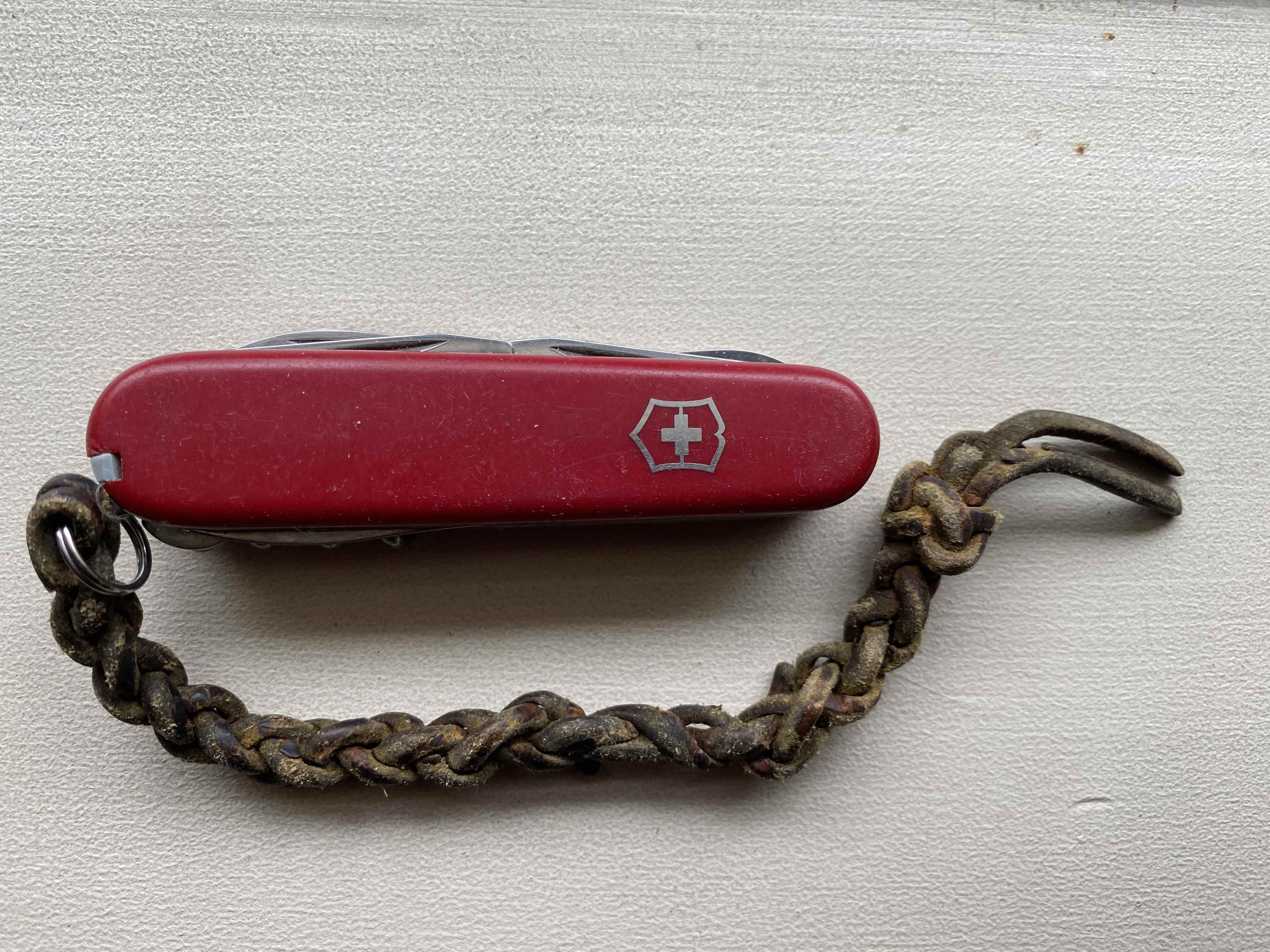40 Slow encounters with sloths
I’ve long been intrigued by the concept of Sloth, which I considered as one of the Seven Heavenly “Wins.” When we were undergraduates at UC Berkeley, Alan Robbins, Fred Burrell, and I shared a basement apartment on Hearst Street. We referred to ourselves as the “Hearst Street Meta-Sloth Beavers.” We were industrious (beyond slothful) in our pursuit of slothfulness.
The first sloths I saw alive were in the OTS course in Costa Rica in 1967 (Chapter 29). Norm Scott, a co-leader of the course, found a two-toed sloth; and we all gathered around to photograph this strange creature.
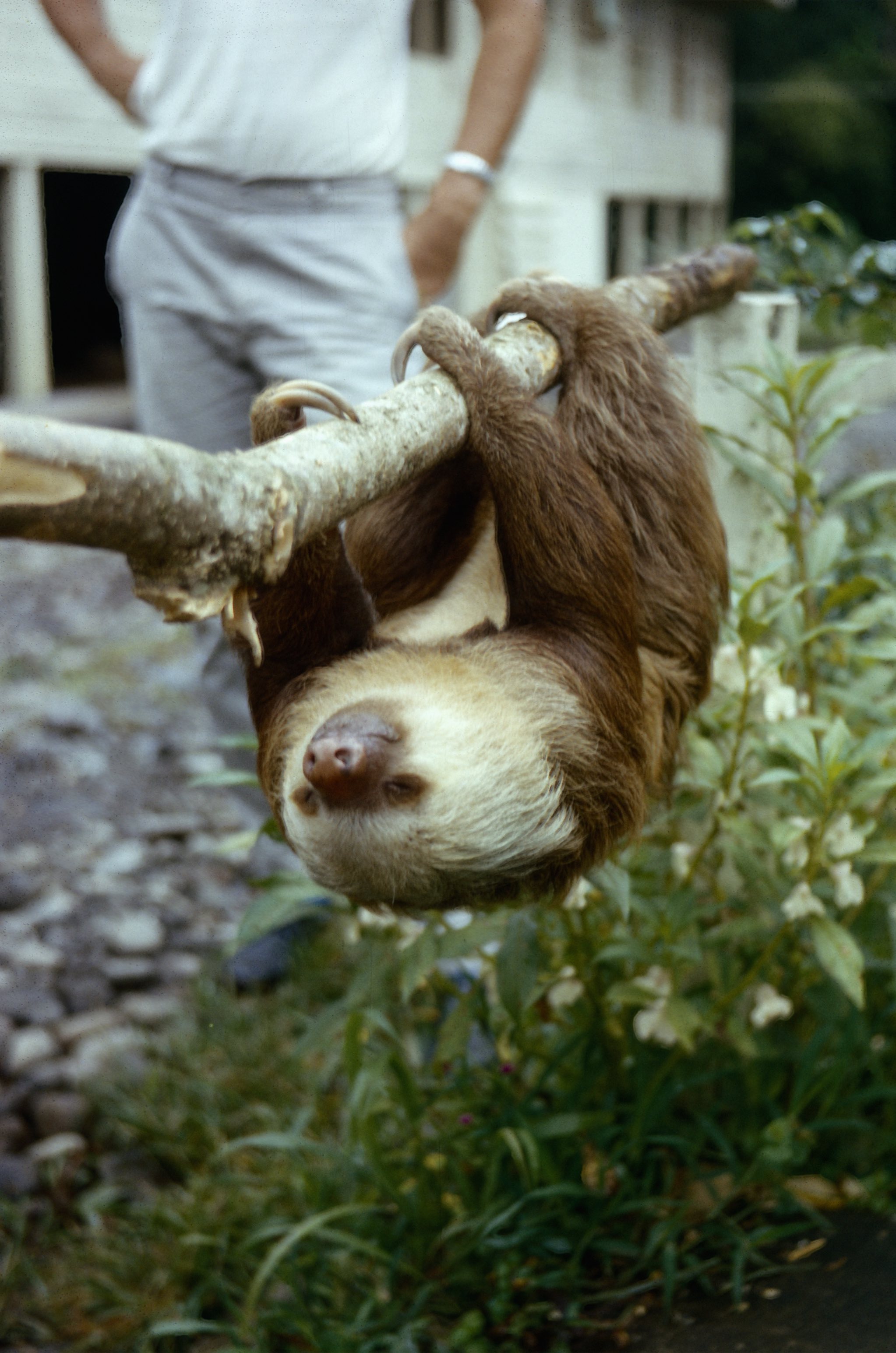
It was hanging (sound asleep of course) on a pole that was slung between two posts. After we got our ‘still life’ photos, Norm decided to see its defensive reactions. He slapped it across the snout. Not hard but still a slap. The sloth opened one eye. Norm slapped the sloth’s snout again. Now the sloth became pissed. It opened its mouth, displayed its very sharp teeth, and then reached out with one arm to grasp Norm’s hand. But the sloth fell asleep long before its claws reached Norm’s attacking hand. Now our sloth was back asleep, suspended by only three legs, with one front leg extended in the air. More photographs were taken.
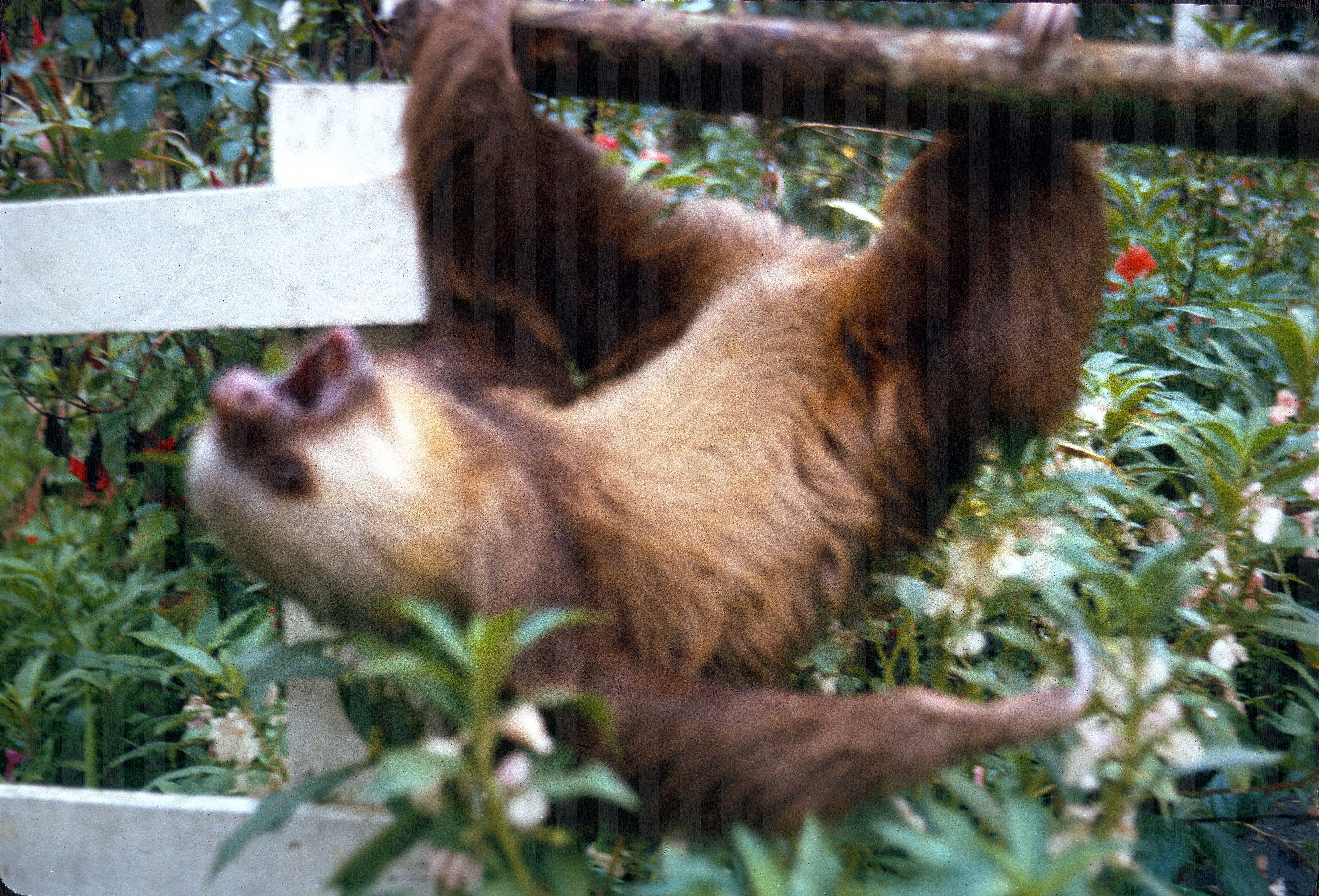
Sloths are biologically fascinating. They are mammals, but their body temperature can swing drastically over the course of a day. They are strict vegetarians, live in the canopy, but descend to the base of their tree to poop. They are slow and their fur is colonized by algae and moths. Sloths have recently become trendy. You can buy sloth dolls, there’s a Ted talk on sloths, and you can join the Sloth Appreciation Society.
40.1 An Albertus Seba print
In 1976 I heard that a book dealer in Los Angeles was selling prints from Albertus Seba, a Dutch biologist. Seba’s famous Thesaurus is four-volume collections of engravings of known organisms (1736). The dealer had salvaged prints from a water-damaged volume that had been found abandoned in a warehouse in Los Angeles. I was crushed that the famous hydra print had already been sold, but I was able to buy several prints (mainly herp ones) as well as this charming engraving of a two-toed sloth – obviously not drawn from life! This print is a prized possession.
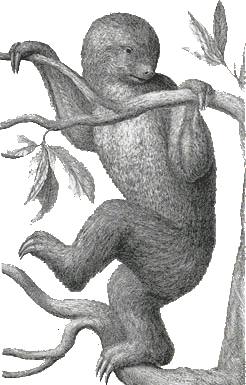
40.2 Evolutionary origin of sloth jokes
In 1982 Rickie van Berkum, my second graduate student, pursued her Ph.D. research on Anolis lizards at the La Selva Field Station in Costa Rica. I spent a week or 10 days with her, supposedly ‘supervising’ her thesis project (she didn’t need my supervision!), and mainly doing a field project with her on thermoregulation of Ameiva lizards.
La Selva was ‘home’ to a diversity of tropical biologists, and most were graduate students. Every afternoon many would gather for a vigorous game of volleyball on a court adjacent to the forest. The volleyball would sometimes take an errant trip into the forest, and someone would scramble to retrieve the ball. “Watch out for Mr. B!” Maureen (“Mo”) Donnelly would yell in her memorable Southern drawl. Mo was reminding the searcher to watch out for [Bothrops atrox], the deadly fer-de-lance snake, which were common at La Selva.
Before I had left home for La Selva, Rickie wrote, saying that the Tortuguero Field Station (Caribbean side of Costa Rica) was asking for volunteers to help with green turtle tagging. The field station was established in the late 1950s by Archie Carr. Although “tortuguero” means turtle catcher in Spanish, the station’s mission was to protect nesting beaches of green turtles and also to study the turtles themselves. Carr’s pioneering efforts helped inspire the people of Costa Rica to designate the Tortuguero National Park in 1970.
During the egg-laying season, females would emerge from the ocean, craw onto the beach, dig a nest, and deposit a clutch of eggs. For decades, volunteers recorded the tag numbers of previously marked females and flipper-tagged any new females. Rickie wrote that the station needed volunteers. She said that she and two other graduate students (Helen Young, Robert Marquis) at La Selva would be going, and she wanted to know whether I could join them. Indeed I could and did!
We shared several unforgettable days in Tortuguero. We would work in 4-h shifts (8 to midnight, midnight to 4 a.m.), walking in the dark along a long stretch of sandy beach, looking for females that were about to dig (or were already digging) nests high on the beach. Greens are big turtles (~ 1 m long). If females had not started digging or laying when they saw us, they would immediately head back to the ocean. But once a female started digging, she would let us walk up to her, check to see if she had a flipper tag, and add a tag if needed. We would record her number and nesting site along the beach.
We traded off shifts every other night – on the first night, I might do the 8 p.m. to midnight shift, but then shift to midnight to 4 a.m. the next night. This switching induced sustained jet lag.
Two of us worked different stretches of beach during the same shift. Few experiences are more magical than walking alone (or with someone!) on a deserted tropical beach at night.
After our shift, we’d head to the dining hall – Miss Junie (the cook) always left snacks for us on a long table. One night I was tired and ready for bed when I went into the dining hall. But draped between two lit candles was a vine snake, Oxybelis. This was the only one I have ever seen alive, suddently I was wide awake, and I chose not to disturb the snake’s candlelight vigil.
When the time came for us to return to La Selva, Rickie, Helen, Robert, and I climbed into an open boat early in the morning and started motoring up the Rio San Juan, which forms the border between Costa Rica and Nicaragua.
It was raining, and we were all hiding under makeshift parkas, wet, cold, and decidedly miserable. I was surprised by how cold the lowland tropics could be, but rain + wind = serious evaporative cooling and windchill.
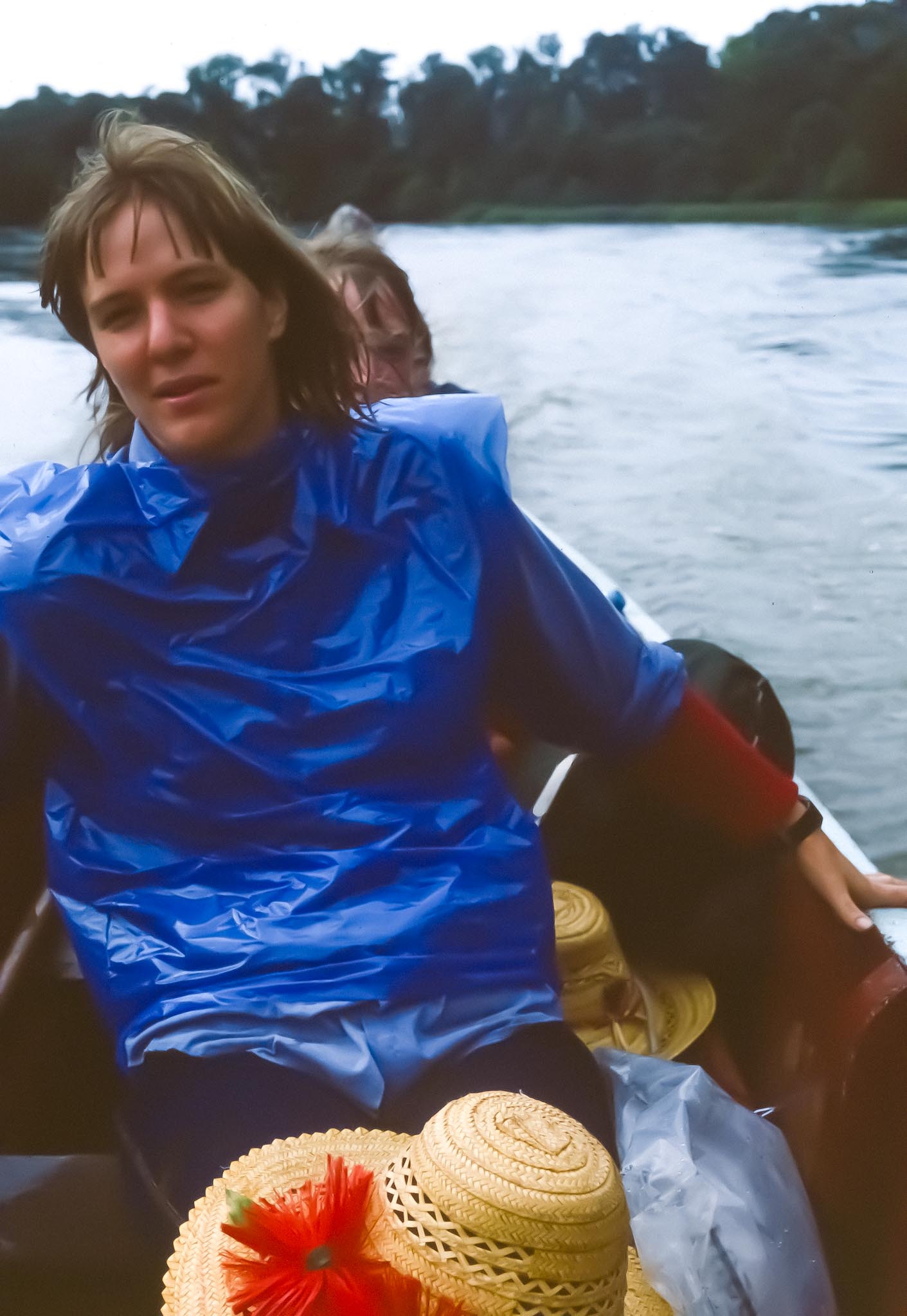
Whenever I am on tropical river (wet or not), I scan the treetops of the trees along the river edge. I can easily see into the canopy and, if I am lucky, I can spot a sloth.
I was disappointed not to have seen a sloth that morning, and I began to wonder, what does a sloth do during a rainstorm? The answer suddenly seemed obvious to me: nothing. They are sloths, after all.
I turned around to Rickie, who was just behind me in the boat and was cold and wet. She was not in the best mood. asked her,
“Hey, Rickie, what do sloths do during a rainstorm?”
She more or less barked at me,
“How the hell do I know!”
So I told her,
“Nothing.”
A minute or two later she asked,
“Was that a joke?”
And there you have the official beginning of Sloth Jokes. Over the years several people have contributed – Joyce Tsuji has been the most creative and prolific. Rickie van Berkum, Trevor Price, and I also contributed to the compilation; and Helen Young, Mike Young, George Schatz, and Karen Overall added a few as well.
In 2022 I searched online for “sloth jokes” and was horrified to find several sites now exist. Obviously, sloths have become trendy over the decades. Our sloth jokes better, and of course we had priority! Here is our official list of sloth jokes.
40.4 Encounters with Sandinistas
Prior to our trip up the Rio San Juan, the Sandinistas overthrew Nicaragua’s dictator and took over the government (1979). When we were travelling up river, all boat traffic was required to stop periodically on the Nicaraguan side and have our papers checked by young Sandinistas who were armed with automatic rifles. We had to make numerous stops, and finally our boat captain got tired of this and skipped one check point. When we got to the next one, the Sandinistas ordered us all out of the boat and forced the captain to go back to the previous check point. So Rickie, Robert, Helen, and I settled down to wait until our boat returned (hopefully), a few hours later.
I had a Swiss army with a braided, leather fob that friend in Africa had made for me. This knife attracted the attention of the head Sandinista, who was quite young but intimidating with his rifle. He began asking questions about my knife. My Spanish was limited, but I understood his questions well enough. Is it hard to find a knife like that? Is it expensive?
And I soon guessed that he was trying to get up enough nerve to ask me to give him my knife – not as a bribe, of course, but as a gift. I wanted to slow down the conversation, hoping to gain a few seconds to think of a response when he finally asked for my knife. I asked Rickie to translate, as a three-way conversation would give me time to think of a response.
When he finally asked for my knife, I had had enough time to plot an answer. In my ‘best’ broken Spanish, I said something to the effect that
“I would be honored to give you this knife. But my grandfather gave me this knife just before he died, and it is a treasured memento of my beloved grandfather.”
I said it loud enough so all the Sandinistas would hear it. That was the end of the “ask.”
Our boat captain eventually came back (I suspect he had been forced to pay a fine), and we continued on our way to La Selva. What an eventful day (sloth jokes and Sandinistas). I still have the knife – and honestly, it was not a gift from my grandfather, and he was very much still alive in 1982. I lied but was not under oath.
